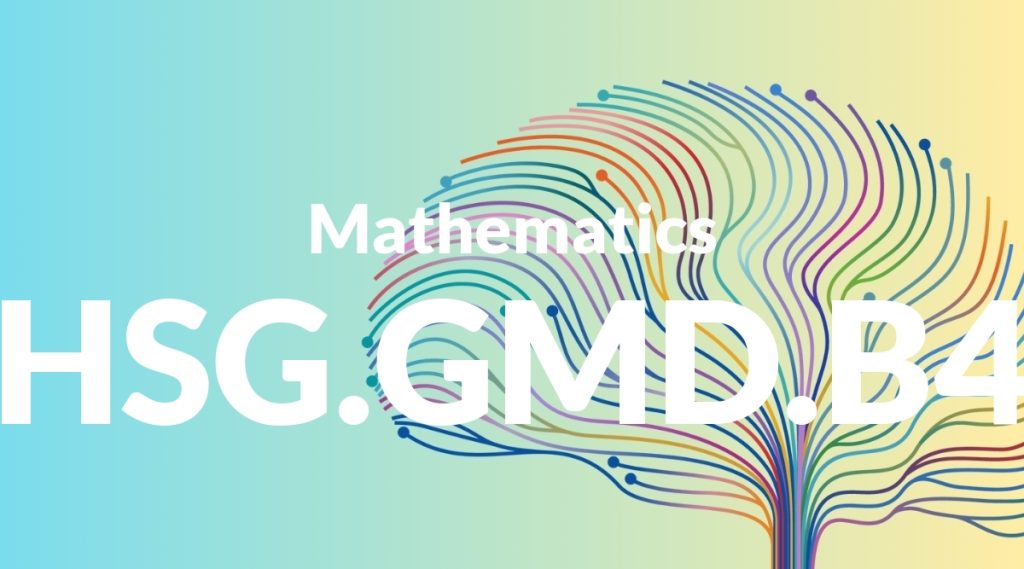Standard: HSG.GMD.B4 – Identify the shapes of two-dimensional cross-sections of three-dimensional objects, and identify three-dimensional objects generated by rotations of two-dimensional objects.
Grade level: High School: Geometry
Subject: Mathematics
Domain: Geometric Measurement & Dimension
Teacher Overview
This standard focuses on helping students understand the relationship between two-dimensional cross-sections and three-dimensional objects, as well as the three-dimensional figures generated by rotating two-dimensional shapes. This knowledge is crucial for fields like engineering, architecture, and medical imaging. Students should be comfortable with basic geometric shapes and properties, and have experience visualizing and manipulating objects in three-dimensional space.
Mastering this standard prepares students for advanced topics in geometry, calculus, and physics, where they will need to understand more complex geometric transformations and analyze real-world problems.
Common Misconception 1
A common misconception is that the cross-section of a three-dimensional object will always look like the original shape. This is incorrect because the shape of the cross-section depends on the angle and position of the cut.
Intervention 1
Hands-on activities with clay or playdough models can help students see how different cuts produce different shapes. Allowing students to physically slice through models can clarify this concept.
Common Misconception 2
Another misconception is that rotating a two-dimensional shape around an axis will result in a larger, similar two-dimensional shape. This is incorrect because the rotation actually creates a three-dimensional object.
Intervention 2
Using computer simulations or dynamic geometry software can help students visualize how rotating a shape around an axis produces a three-dimensional figure, such as a cone or cylinder.
Prerequisite Knowledge
Students should have a solid understanding of basic geometric shapes, properties of two-dimensional and three-dimensional figures, and the ability to visualize and manipulate objects in space.
Subsequent Knowledge
After mastering this standard, students will be able to apply their understanding to more complex geometric transformations, analyze real-world engineering problems, and understand advanced concepts in calculus and physics.
Instructional Activities
- Create clay models and slice them at different angles to observe cross-sections.
- Use dynamic geometry software to simulate rotations and cross-sections.
- Design a simple architectural model and analyze its cross-sections.
- Explore medical imaging techniques through case studies.
- Investigate astronomical models and their cross-sections.




